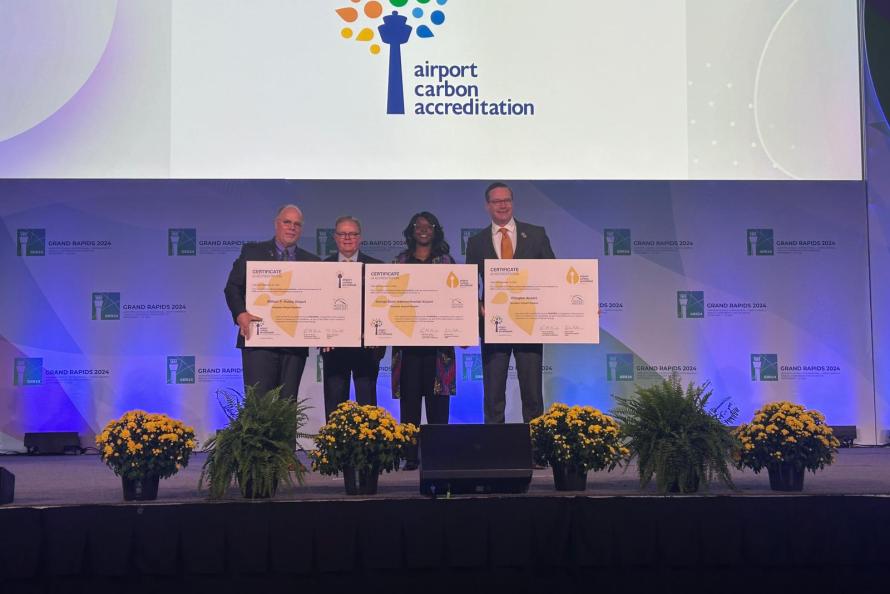
HOUSTON — Airports Council International (ACI) announced that George Bush Intercontinental Airport (IAH) and William P. Hobby Airport (HOU) achieved Level 2 of the Airport Carbon Accreditation program.
Houston Airports is committed to carbon neutrality by 2030 and has already begun implementing several sustainable initiatives, including the transition to an all-electric fleet of vehicles, solar panels, LED lighting, and thoughtful upgrades to airport terminals.
According to a news release, ACI Airport Carbon Accreditation is the only carbon management certification standard for airports. It is the only voluntary global carbon management standard that helps airports to manage and reduce their carbon footprint. The program is focused primarily on CO2 emissions and offers a common framework for airports to analyze and identify carbon-intensive activities. It is site-specific and can be used by airports to plan daily and long-term sustainability strategies through continuous improvement and stakeholder partnerships.
“Reaching ACA Level 2 at Bush and Hobby airports represents a significant milestone in our journey toward a more sustainable future for Houston Airports. This achievement reflects our ongoing commitment to reducing our carbon footprint and making substantial, data-driven progress in environmental stewardship,” said Jim Szczesniak, Director of Aviation for Houston Airports. “As we advance through the levels of carbon accreditation, we remain dedicated to implementing sustainable practices that not only benefit our community today but also secure a cleaner, greener future for future generations.”
In March 2023, Houston Airports formally began working towards ACI Airport Carbon Accreditation.
Level 1 is the Mapping Phase, which establishes the baseline for measuring future reduction efforts.
Bush, Hobby, and Ellington airports achieved ACI ACA Level 1 in September 2023.
Level 2 is the Reduction Phase, which provides evidence of emission reductions.
Bush and Hobby airports achieved ACI ACA Level 2 in September 2024.
From 2019 to 2022 (excluding 2020), Houston Airports reduced emissions primarily through initiatives such as a more efficient new central utility plant, new solar photovoltaic array, increased LED lighting use, and reduced equipment run time.
• 16% reduction of emissions at Bush Airport
• 22% reduction of emissions at Hobby Airport
“Achieving ACI ACA Level 2 clearly indicates our strategic approach to integrating sustainability into every facet of airport planning and development. Our focus remains on harnessing innovation and collaboration to drive continuous improvement, ensuring that our operations align with the highest environmental standards,” said Karen Korir, Director- Planning and Development for Houston Airports. “This accomplishment underscores our proactive efforts in reducing emissions and further strengthens our resolve to meet our ambitious carbon neutrality goals.”
Houston Airports is working to achieve ACA Level 3 at Bush and Hobby airports. Level 3 widens the scope of the airport’s carbon footprint to include third party emissions. The goal of Level 3 is to engage third parties to reduce their carbon footprint at and around the airport. Level 3 can be achieved through awareness and behavior change campaigns, training, setting minimum performance standards and forming strategic partnerships. You can learn more by clicking here.
According to ACI, airports account for roughly 5% of aviation’s carbon footprint on average. The majority of emissions are from ground operations, including energy use for heating, cooling, lighting, and airport vehicles. Houston Airports is among the more than 586 airports worldwide enrolled in the program and certified at various accreditation levels.
Source: Houston Airports






